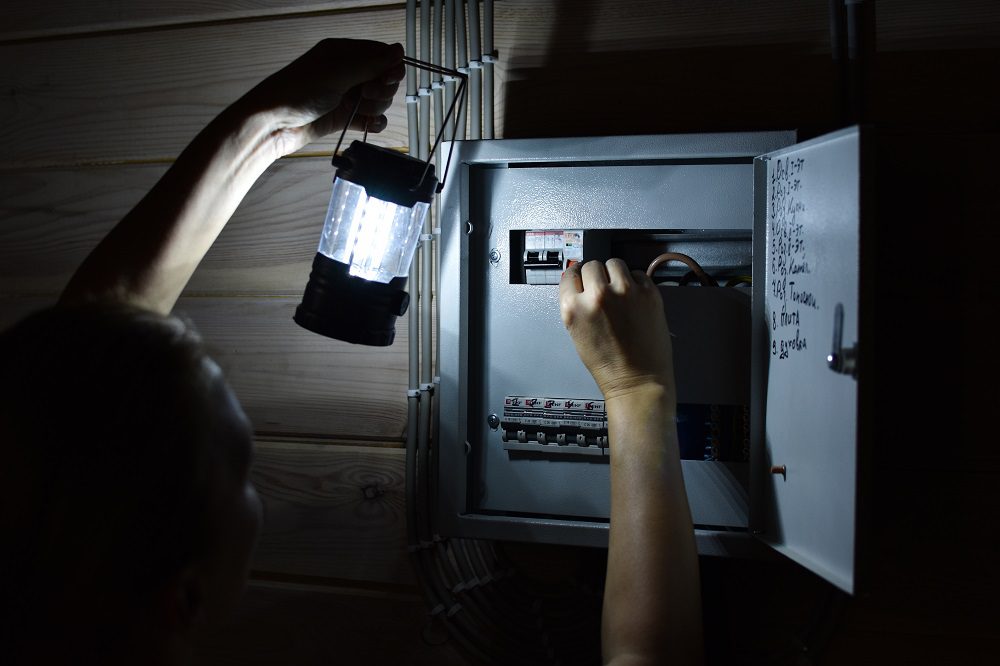
Electrical Fixes To Take Care of Before Selling Your Charlotte Home
Selling a home in Charlotte moves fast, especially in neighborhoods like Ballantyne, South End, Plaza Midwood, and University City. Strong photos and a clean yard help, but buyers and inspectors zero in on electrical safety and functionality. Small fixes can prevent price drops, contract delays, or a second inspection. This guide covers the most impactful electrical repairs to handle before listing, based on what inspectors and buyers flag most in Mecklenburg County.
What buyers and inspectors look for in Charlotte
Home inspectors in Charlotte follow the same standards, yet local housing stock adds patterns. Ranch homes from the 1960s may have original panels and two-prong outlets. Brick homes from the 80s can hide aluminum branch wiring splices. Newer townhomes in Steele Creek or Lake Wylie usually pass safety basics but often fail on GFCI placement or loose devices. Any of these can stop a sale or trigger repair credits.

An experienced electrician checks to current code for safety, while respecting that older homes are not required to be fully upgraded. The goal is to correct hazards, improve function, and avoid red flags. For sellers searching electrical repair Charlotte NC, the fixes below place the home in the best light without overspending.
Replace unsafe or outdated electrical panels
A healthy panel sells confidence. Buyers see a neat, labeled panel and assume the rest of the system is cared for. Inspectors look for brand, ampacity, grounding, bonding, and workmanship. Some panels have known issues:
- Federal Pacific Electric (FPE) Stab-Lok and certain Zinsco/Sylvania panels have a history of breakers failing to trip. Replacement is strongly recommended.
- Panels undersized for modern loads, such as 60- or 100-amp service in larger homes with EV chargers, hot tubs, or dual HVAC, raise questions about capacity.
In many Charlotte resales, upgrading to a 150- or 200-amp panel makes sense, especially in homes ready for EV charging. Expect a typical replacement to take one day, with permits and utility coordination. A clean panel with AFCI/GFCI protection where required often converts an inspection into a quick pass.
Fix GFCI and AFCI protection in the right places
GFCI outlets protect against shock in wet or damp areas. Kitchens, bathrooms, garages, laundry areas, exterior outlets, and unfinished basements need GFCI protection. The fix can be a GFCI receptacle or a GFCI breaker. Inspectors also check that downstream outlets are protected and labeled.
AFCI protection reduces arc faults that can cause fires. Bedrooms have needed AFCI protection for years, and newer code expands it to most habitable rooms. Many Charlotte inspections fail on missing AFCI in bedroom circuits. An electrician can often add AFCI breakers at the panel.
For kitchen remodels done years ago without permits, GFCI and AFCI gaps show up fast. Correcting these is a quick win that reassures buyers.
Replace ungrounded or damaged outlets and switches
Two-prong outlets still show up in older Charlotte bungalows. They are not grounded and fail many lender requirements. Buyers dislike adapter plugs and extension cords. There are three practical paths:
- Add grounding by installing a new grounding conductor, which is the best fix but more invasive.
- Install a GFCI outlet at the first outlet on the circuit and label the downstream three-prong outlets “GFCI Protected” and “No Equipment Ground.” This is code-allowed and common for pre-listing sales.
- In spaces being renovated, rewire with grounded cable.
Cracked plates, loose outlets that cannot grip plugs, and discolored or heat-damaged switches signal poor maintenance. Replacing devices is low-cost and high-impact. Use tamper-resistant receptacles; many buyers with kids ask for them.
Correct open grounds, reverse polarity, and loose connections
These are the quiet deal-killers. A simple tester can show open grounds and reversed polarity. Loose backstabbed connections at outlets or switches can cause intermittent power and heat. Inspectors write these up, and buyers demand corrections.
An electrician will reterminate devices using the side screws, tighten wirenuts in junction boxes, and replace worn boxes that cannot secure a device. These repairs improve safety and stop flicker, tripped breakers, and outlet wiggle that spooks buyers.
Address lighting issues room by room
Lighting is where buyers feel the home. Dead can lights, mismatched color temperatures, and buzzing dimmers make rooms feel dated. Quick upgrades have a strong return:
- Replace burnt bulbs with long-life LED lamps, consistent color temperature (2700K for warm, 3000K for clean).
- Verify trim kits sit flush and IC-rated cans are safe with insulation in older attics.
- Swap failing dimmers for LED-compatible models.
- Add occupancy sensors in garages and laundry rooms; buyers love the convenience.
Watch for oversized fixtures on small boxes, sagging chandeliers, and fan wobble in bedrooms. Tightening mounting brackets and balancing fan blades solves most wobble issues.
Make kitchens and baths inspection-proof
Kitchens and baths get the toughest electrical repair cost scrutiny because water and power share space. Inspectors look for spacing and protection more than style:
- Kitchens need two or more small-appliance circuits with GFCI protection serving countertop outlets. Outlets should be no more than 48 inches apart, and any section wider than 12 inches needs an outlet. Islands and peninsulas must have at least one outlet.
- Bathrooms need a dedicated 20-amp GFCI-protected circuit for receptacles. Fans should be on proper switches and, if they include heat or light kits, wired correctly.
Sellers often forget to fix the simple things: dead range hoods, nonfunctional undercabinet lights, or a disposal that shares a GFCI incorrectly and trips. A quick service visit handles these and protects the sale.
Evaluate aluminum branch wiring and knob-and-tube
Parts of Charlotte built in the late 60s to mid-70s may have aluminum branch circuits for 15- and 20-amp outlets and lights. It is not an automatic fail, but it needs approved repairs at terminations, such as COPALUM crimping by a certified installer or AlumiConn connectors with antioxidant. Insurance companies care about this, and buyers often ask for proof of remediation.
Knob-and-tube still exists in a few older Dilworth and NoDa homes. It can be safe when untouched, but insulation over it, tapped connections, or DIY splices violate code. A pre-listing inspection identifies risk. Targeted rewiring of affected runs usually satisfies inspectors and insurers without opening every wall.
Grounding, bonding, and surge protection
Modern buyers ask about whole-home surge protection, especially with EVs, smart thermostats, and home offices. A Type 1 or Type 2 surge protector at the panel protects major electronics for a modest cost. Grounding and bonding matter too: the grounding electrode system should connect to ground rods and the metallic water service where present, with intact clamps and wires. Missing bonds on gas piping or CSST can also show up in reports. Correcting these items adds both safety and selling power.
Exterior, garage, and crawlspace fixes that matter
Charlotte humidity and clay soil create their own wear patterns. Exterior GFCI outlets often fail or lose weather-resistant covers. Replace with in-use bubble covers and weather-resistant receptacles. In garages, open junction boxes, exposed NM cable where protection is required, and missing covers on subpanels are frequent flags.
Crawlspaces may reveal splices hanging loose, low-mounted boxes near moisture, or extension cords acting as permanent wiring. Correct all of it. Tie low-voltage cabling neatly and attach loose doorbell transformers to proper boxes. These tidy-ups show the home has been cared for.


Smoke alarms and carbon monoxide detectors
Most contracts and lenders in North Carolina expect working smoke alarms in every bedroom, outside sleeping areas, and on every level. If the home has gas appliances or an attached garage, install CO detectors on each level and near sleeping areas. Interconnected, hardwired alarms with battery backup are ideal, but 10-year sealed battery alarms are acceptable in many cases. Replace any unit older than 10 years; buyers and inspectors check manufacture dates.
Permits and documentation buyers trust
For larger work such as panel upgrades, new circuits, or aluminum wiring remediation, Mecklenburg County permits and final inspections help avoid re-negotiation. Keep clear documentation: permit numbers, passed inspection records, and a brief scope of work. Label the panel with circuit directories that match the actual rooms. A neat label makes showings smoother when buyers test switches and outlets.
Budgeting smart: what to fix before listing
A full rewire is rarely required to sell. Focus on safety, function, and common red flags. Based on local projects:
- Device refresh and GFCI/AFCI corrections: usually a half to one day of labor plus materials.
- Panel replacement: typically one day, with scheduling for utility disconnect/reconnect.
- Lighting repairs and dimmer replacements: a few hours.
- Targeted aluminum wiring remediation: varies by number of terminations; plan for a technician day or two.
If time is tight, prioritize life-safety items first, then panel issues, then functionality and lighting.
How Ewing Electric Co helps Charlotte sellers move fast
Ewing Electric Co works across Charlotte and nearby towns from Matthews to Huntersville. The team focuses on pre-listing punch lists and buyer-demanded repairs with clear communication and clean workmanship. Sellers use the service for:
- Same-week assessment focused on inspection failures common in Charlotte.
- Written scope with line-item pricing, so agents can attach it to disclosures.
- Coordination with Mecklenburg County permitting when needed.
- Final walkthrough photos and labels that help the listing show better.
For anyone searching electrical repair Charlotte NC, a short, focused visit can turn a nervous buyer into an eager one.
A quick pre-listing checklist
- Confirm GFCI and AFCI protection where required.
- Inspect the panel brand, labeling, grounding, and breaker types.
- Replace damaged or ungrounded outlets, mismatched dimmers, and loose devices.
- Verify kitchen and bath outlet spacing, garage and exterior GFCIs, and proper covers.
- Test all smoke and CO alarms; replace units older than 10 years.
Ready to sell with fewer surprises?
A small set of well-chosen electrical fixes protects your sale price and timeline. If you want an honest, fast assessment and straight answers on what matters for your home and neighborhood, contact Ewing Electric Co. The team schedules quick-turn appointments across Charlotte, including Ballantyne, South End, Plaza Midwood, Steele Creek, Dilworth, and surrounding areas. Call or request a visit online to get your pre-listing electrical work handled the right way.
Ewing Electric Co provides dependable residential and commercial electrical services in Charlotte, NC. Family-owned for over 35 years, we handle electrical panel upgrades, EV charger installation, generator installation, whole-home rewiring, and 24/7 emergency repairs. Our licensed electricians deliver code-compliant, energy-efficient solutions with honest pricing and careful workmanship. From quick home fixes to full commercial installations, we’re known for reliable service done right the first time. Proudly serving Charlotte, Matthews, Mint Hill, and nearby communities. Ewing Electric Co
7316 Wallace Rd STE D Phone: (704) 804-3320 Website:
https://ewingelectricco.com/ |
Google Site
Social:
Facebook |
Instagram |
Twitter
Map: View on Google Maps
Charlotte,
NC
28212,
USA